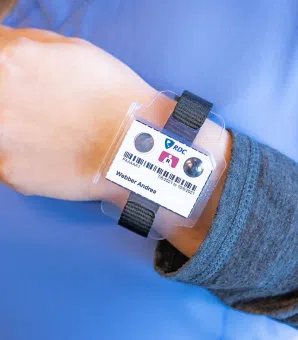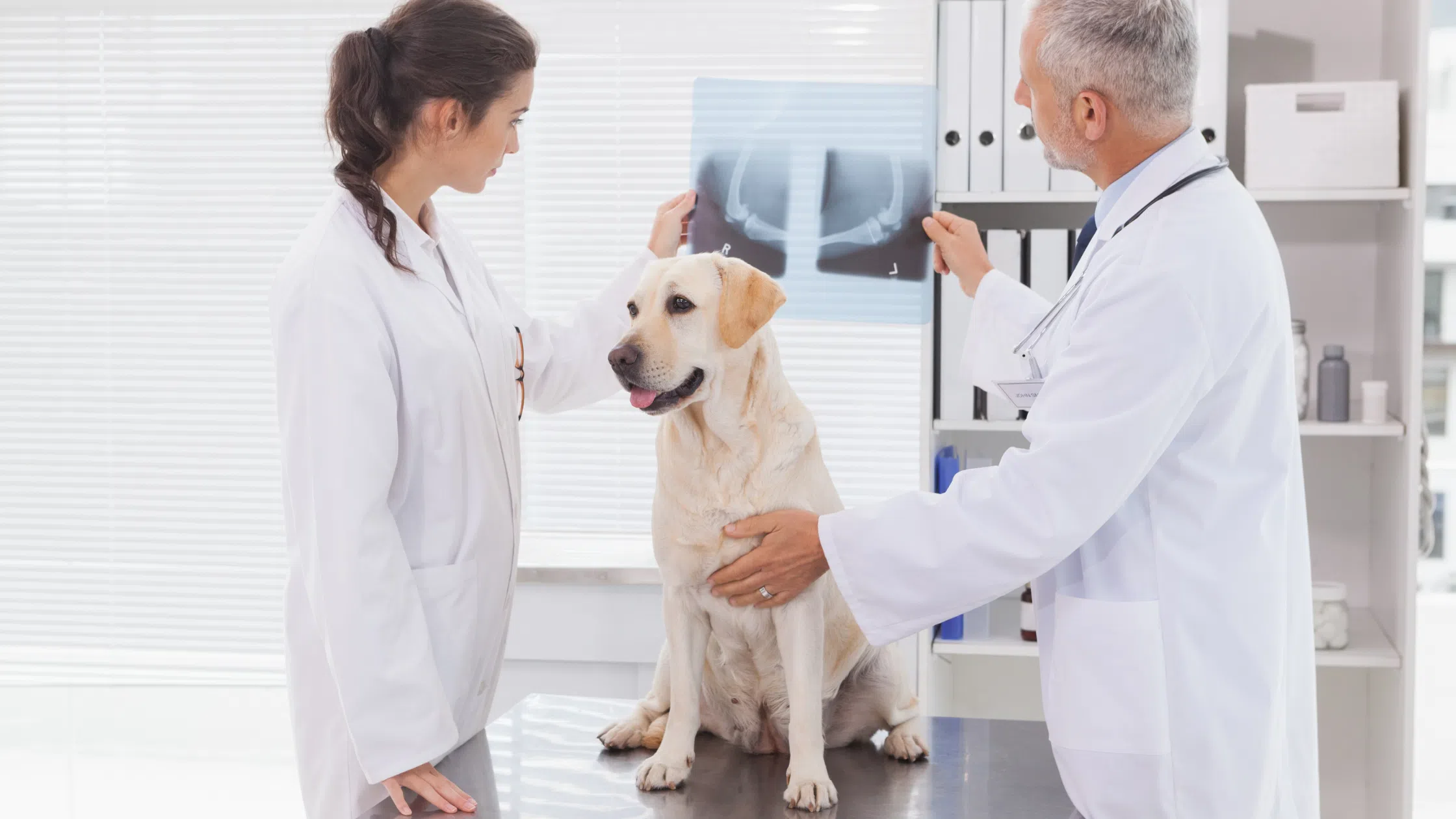
Dosimeter badge services for medical, dental, and veterinary businesses
Learn how Radiation Detection Company’s easy-to-use dosimetry solutions can boost the efficiency of your practice.
There are many different types of dosimeters on the market these days. Specialization has allowed for some dosimeters to make more sense than others based on needs present in the workplace. In this article, we'll review the purpose and benefit of different types of dosimeters, and why you should consider using them for your organization.
We hope you find this article informative, and as always, we look forward to hearing your feedback!
Ionizing radiation is a form of energy that causes the removal of electrons from atoms and molecules of materials. Ionizing radiation is able to travel unseen and passes freely through these materials in the form of waves or particles. There are five types of ionizing radiation: alpha particles, beta particles, neutrons, gamma rays (gamma radiation), and x-rays (electromagnetic radiation).
Radiation protection is critical to those working in environments where ionizing radiation is present. Minimizing radiation exposure is paramount to the safety of such workers. For this reason, the US Nuclear Regulatory Commission (NRC) established dose limits for occupational exposure for people working with radioactive material or ionizing radiation (i.e. x-ray imaging equipment and external beam radiation therapy). This dose limit functions as a form of radiation protection for personnel monitoring. It also helps prevent the possibility of a radiation incident. Be sure to work with your organization's radiation safety office to ensure you're following your company's radiation safety program to help minimize exposure.

Normally those in contact with radioactive substances during the regular course of their employment (or those who have the potential to be exposed to radiation), carry personal dosimeters. These dosimeters are specifically designed to record and indicate a measure of the accumulated dose absorbed by the person.
Active dosimeters measure instantaneous doses, provide a visual indication which can alert attention to possible exposure, and follow the variations of radiation exposure over time. Personal radiation detectors - like electronic personal dosimeters (EPD), personal emergency radiation detectors, and a quartz fiber dosimeter - play a major role in active dosimetry, as active dosimeters generally require an external source of energy to operate. An electronic personal dosimeter provides a real-time direct display of information about the measured dose for the individual wearing the device.
Passive dosimeters do not need an external source of energy to operate. They are also known as integrating dosimeters, which means they only give an estimate of the cumulative dose. Passive dosimeters record how much radiation an individual is exposed to over a specific period of time (i.e. a week, month, quarter, or year).
Passive dosimeters are preferred in hospital settings and locations where occupational radiation workers are frequently exposed to low levels of radiation. These instruments are called “passive” dosimeters because they do not need to be continuously monitored.

Thermoluminescent dosimeters (TLD) and Optically Stimulated Luminescent dosimeters (OSL) are the two primary types of radiation dosimeter used in passive dosimetry. While both Thermoluminescent dosimeters (TLD) and Optically Stimulated Luminescent dosimeters (OSL) measure dose level, their main difference is optically stimulated luminescence requires only light stimulation, while a TLD requires heat in order to stimulate the detector.
For more on the differences between and features of TLD and OSL dosimeters, please check out our recent blog titled, "TLD vs. OSL Dosimeter - Instruments of Passive Dosimetry."
Our Standard Type 82 TLD-XBG badge or Type 83 TLD-XBGN badge for neutrons are used to monitor occupational exposure to a single individual working with radioactive materials. "Whole body” is considered to be the head, torso, arms above the elbow, or legs above the knee.
TLD whole body dosimeters have been a trusted technology for decades and are still highly effeicient today.
Like whole body TLD badges, OSL badges are generally worn on the collar, waist, or torso, with the label facing the source of the radiation.
A major benefit is OSL dosimeters provide for the possibility of repeated readout. This means that OSL dosimeters are often archived for multiple years and can be re-read, as the dose does not fade. OSL dosimeters can also be read with light (unlike a TLD dosimeter which must be heated), which helps simplify the design. Their low dose rate sensitivity is also a benefit. Finally, OSL dosimeters are not impacted by heat or water.

Our TLD-XBG Extremity ring badge is available for radiation workers whose job functions potentially require their arms, legs, hands, feet, fingers, and toes to receive a higher exposure.
Ring badges can be used by veterinarians taking x-rays - i.e. having to hold the animal down during the exam. Accurately assesses personal dose equivalent at the site where it's worn.
Our Standard Type 82 TLD-XBG badge or Type 83 TLD-XBGN badge for neutron is fitted with a velcro strap to be worn around the wrist. The wrist badge is available for radiation workers whose arms may receive a higher exposure, used due to dexterity issues, or even safety reasons.
Wrist badges are a viable alternative to ring badges, especially in nuclear medicine where the dose distribution on different locations of the hand differs.
Our Standard Type 82 TLD-XBG badge or Type 83 TLD-XBGN badge for neutron should be worn close to the embryo/fetus to obtain the most accurate dose.
Fetal Monitors are available for pregnant radiation workers to ensure the fetus does not exceed 500 mrem for the entire gestational period or 50 mrem in a month.
Area Monitors can be used to ensure that the public is not being exposed to more than 100 mrem/year from outside a room/building.
Monitors potential exposure to the public, as it is the responsibility of the company to prove that the public is not being exposed to more than the allowable dose limits. Area Monitors can also be used to monitor occupational dose to employees in a room where the radiation source is located (or a room near a source, or dangerous radiation zone).
Radiation Detection Company has 75 years of experience providing quality dosimetry service to over 28,000 companies nationwide. Need help understanding what dosimeters your organization needs? Please contact us, and our team will be happy to provide guidance.
Need a question answered that we did not address in this article? Please reach out to our Customer Care team, and one of our specialists will be more than happy to help.
Learn how Radiation Detection Company’s easy-to-use dosimetry solutions can boost the efficiency of your practice.
